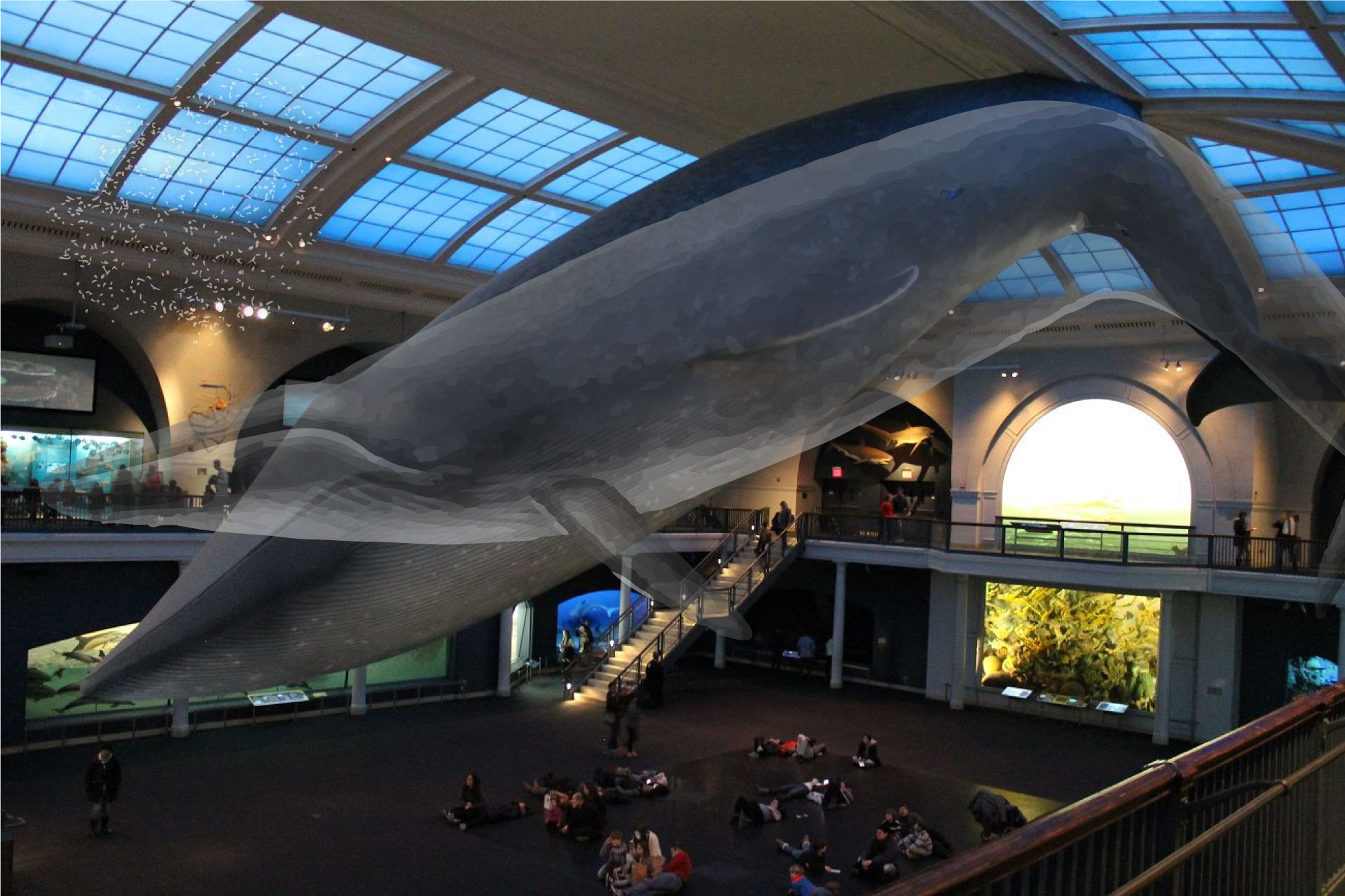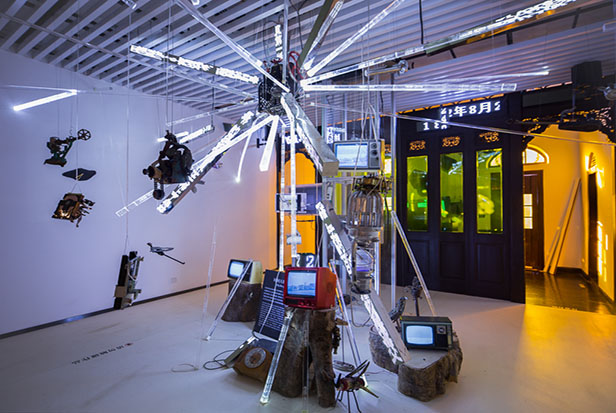Project time
Feb – May 2021
Client
American Museum of Natural History
Team
Casta Zhu / Tiange Hou / Jung Huh
Tools
AR (Unity) / 3D animation (Blender & maya)
Project Description
The Whale Story is designed for the American Museum of Natural History. Under the huge blue whale model in the Hall of Ocean Life, people can observe the blue whale through the AR experience. Users can learn about the behaviors of blue whales by observing how a blue whale swims around the hall and feeds on krill. All of the movements are scientific data-based, delivering accurate knowledge to the user.
The experience also intends to arouse people’s attention to the threat the blue whale is facing. By interacting with the augmented blue whale, users can understand the hazards of marine plastic pollution. Also with the “save the whale” button that cleans up the microplastic in the krill patches, we are conveying the idea that we can protect our ocean and the blue whale from little actions.
The AR experience provides both immersive and educational modes, giving users the freedom to both be engaged in the world of the blue whale or get scientific details on different components, movements, and actions we can take. It is also created to be experienced on both floors of the Hall of Ocean Life, giving diverse viewpoints.
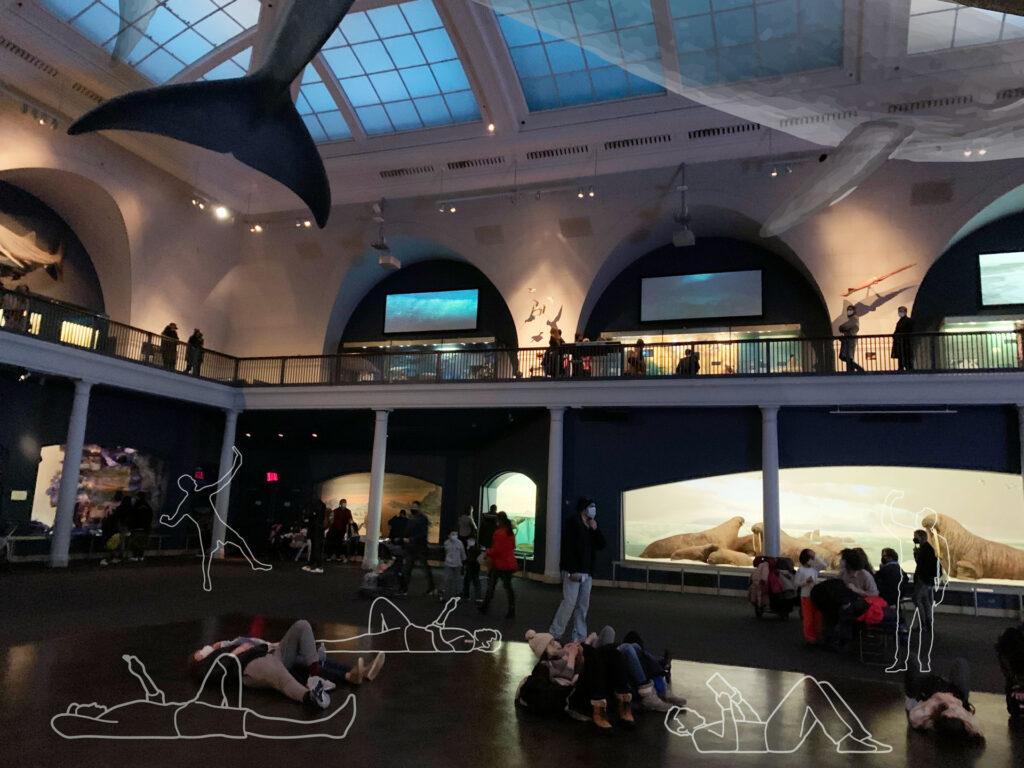
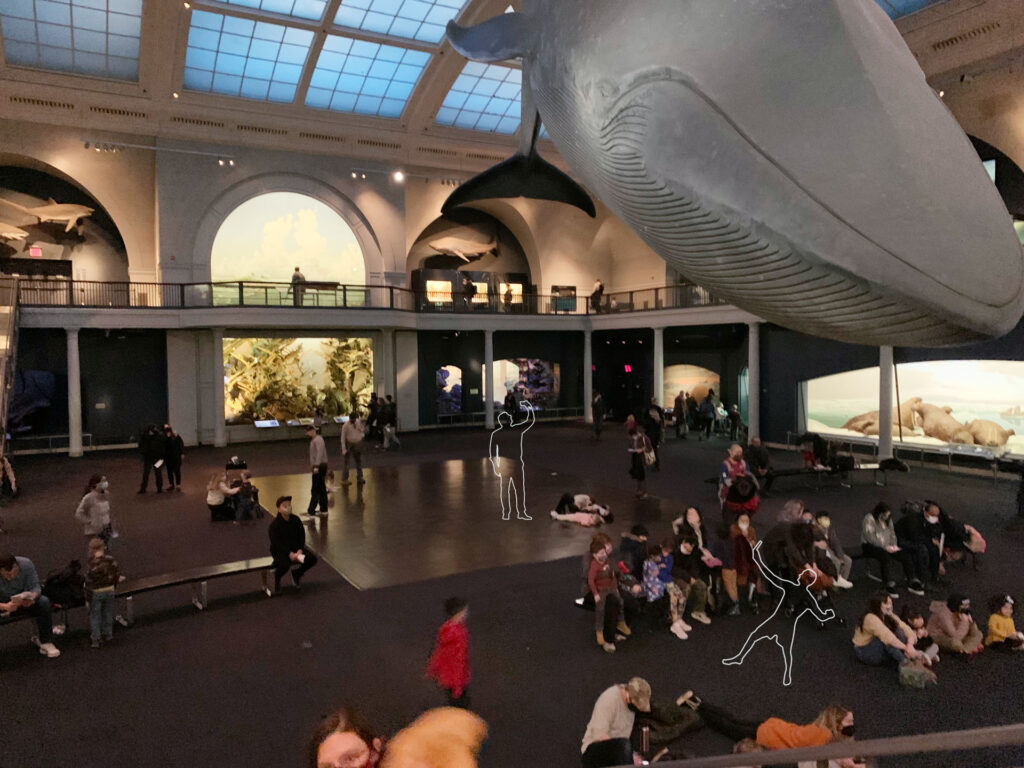
User Journey

User Scenario
The AR experience provides both immersive and educational modes of divining into the behavior of the blue whale.
App User flow design
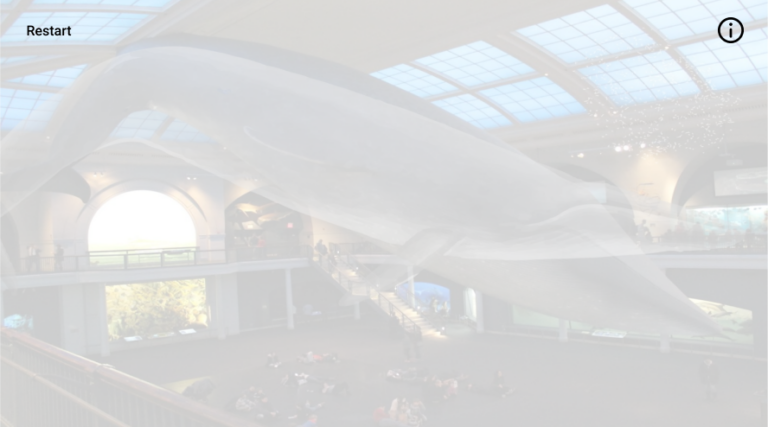





1 – Onboarding
The AR experience provides both immersive and educational modes of divining into the behavior of the blue whale.
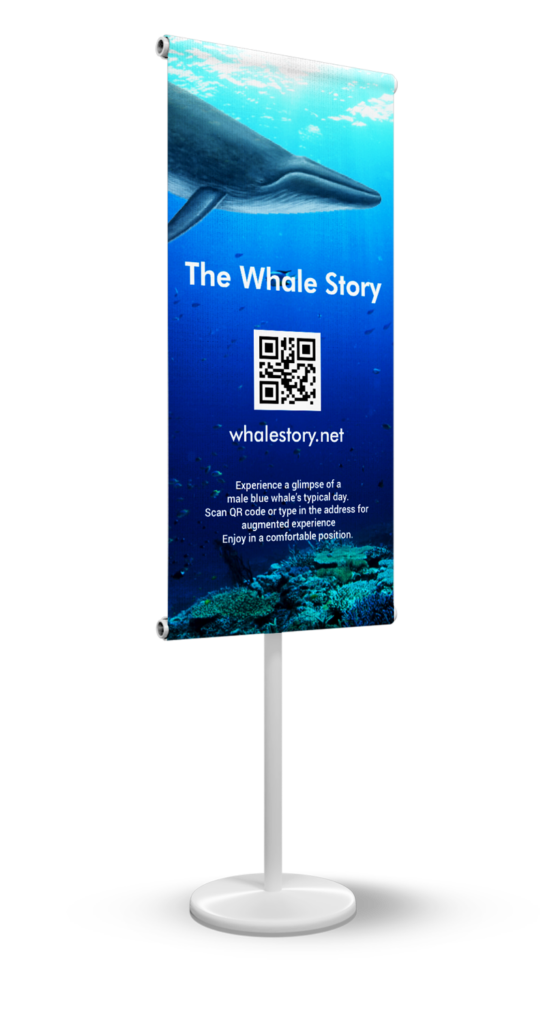

2 – AR Initiation
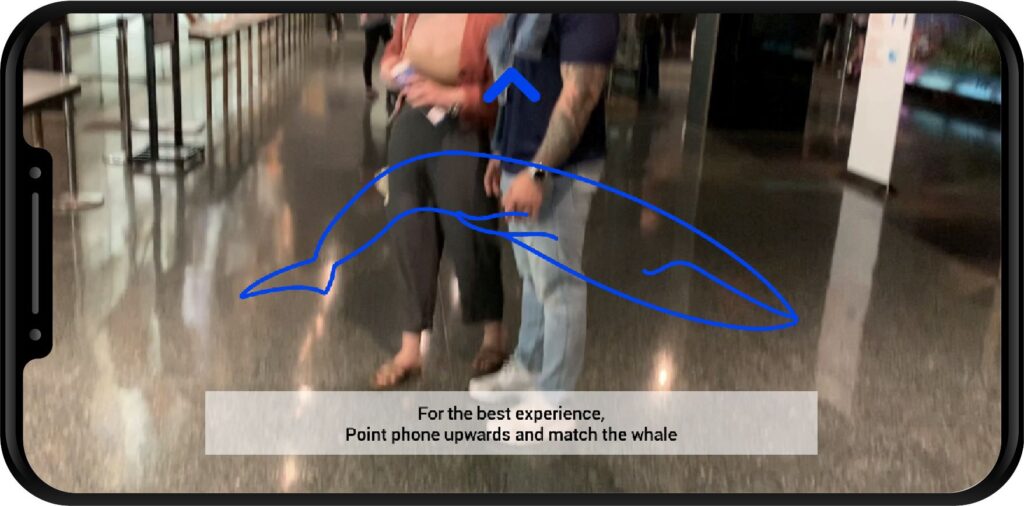

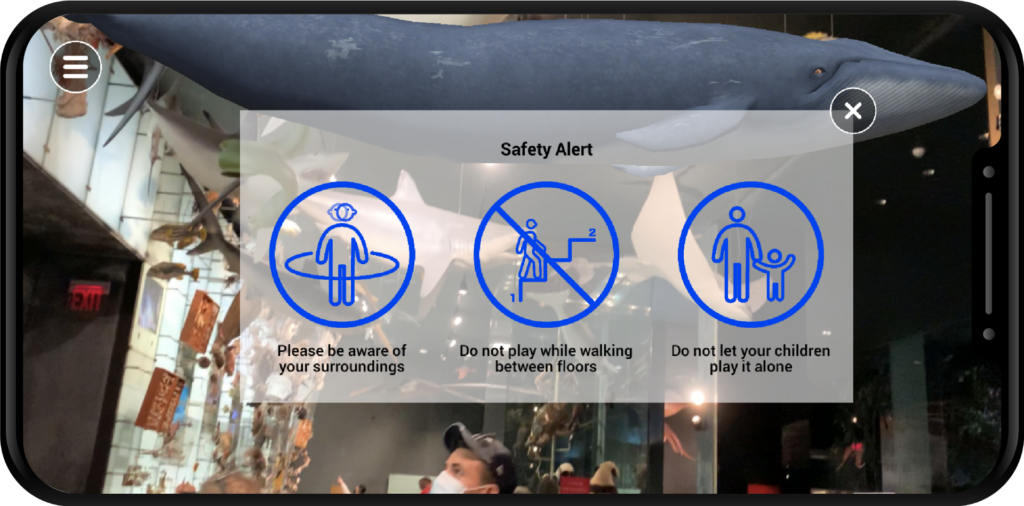
Gyroscope used to help users to find the blue whale model easily and start the experience at the right location
On finding the sculpture, the visitor taps on the screen to start
The safety regulation is described for safer experience
3 – Two Modes of experience
Considering the right balance between visitors immersing in AR content and taking action to learn educational content, we have chosen to provide two modes and let users choose
Immersive Mode
Educational Mode
4 – User Interaction
5 – Scientific Facts
Educational contents are critical for museums. Thus, our AR experience also aims to educate our users on several scientific facts about blue whales. Specifically, through this AR experience, users could learn about blue whales’ behaviors and one of the threats they face: microplastics pollution. Our references are from a group of scientists at Stanford University who collaborate with AMNH.

For the behaviors part, we emphasize blue whales’ swimming and feeding behaviors. Users could see how a blue whale dives down, eats, and swims around.
Feeding behavior is illustrated in detail. We put the three phases during the blue whale’s feeding behavior in this experience. The time for each phase is the same as what happens in real-world, for scientific accuracy. Users could see how a blue whale accelerates first, then engulfs krill with a large amount of water, and finally filters the water out when it eats.
For the microplastics threat part, the scientists mention that because blue whales are filter feeders, they are suffered from plastic pollution in the ocean. When the blue whale engulfs large amounts of water with krills and fish, it brings those pollutants inside the body. Through our educational mode, in a short video, we show our users what microplastics are and what we could do to protect the ocean and blue whales.

